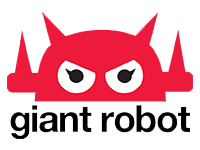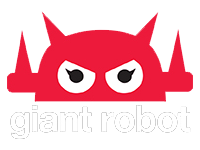Artist Interview Aaron Russell Brown - Through the Woods

Jennifer Bequio: For the show Through the Woods I noticed there’s a common element of humor in your pieces. Can you talk a little about this?
Aaron Russell Brown: Sure. I think it’s just a reflection of my own values. It’s what I’m interested in, just in general with life, with people, and with images in art I see. And by images I mean movies or any sort of creative expression, and I just think that it’s what I know most about. So I’m just trying to make what I know.
JB: So humor shapes your art?
AB: Yeah, it’s what shapes my own personality. It just is something that I feel I’m being honest with what I like to express. So if I like to express it normally then I like to express it in my art too, see what I can do. And I, you know, just to make people laugh, get a reaction; it’s a good way to get a reaction too.
JB: Oh yeah, I notice that a lot of people stop by your work, and they really appreciate how funny it is.
AB: Yeah, that’s the best. That’s the number one thing to do. And like pulling out the wallet is next [chuckles]. But first you gotta stop.
JB: What are your personal thoughts on humorous art? Or do you see a lot being produced, or not?
AB: You know, I’ve seen it in high art and in the most, I guess, accessible forms of art. So I think it just comes down to “how good is the joke?” I mean if it’s good, then I think that it should be used in art. But some people may look down upon it, or they think humor is not something that would appeal to certain people. But I probably wouldn’t want to hang out with them anyway. So I think I’m just trying to reach out to like-minded people, or people who would “get it” so to speak.

JB: So for humorous art, do you only see it being produced and appreciated in certain spaces?
AB: Yeah, people who also don’t take themselves too seriously would enjoy it. I guess it’s more in affordable art, and I guess it would be more around what I do. Or selling prints, selling affordable art, humor is part of it. But it’s not just pigeonholed into that, I think. It’s in other stuff too, like museums and art galleries where art is expensive. But it’s again, how you go about it.
JB: How do you think art galleries approach humorous art? Do they actively try to portray it?
AB: I don’t know, that’s a tough one. They probably don’t. They probably shy around it. But I’m not sure. It’s probably more of a negative in certain areas than it is a positive.
JB: Why do you think that is?
AB: I think it maybe seen as cheap or easy. But if it’s making commentary, I guess if you tie a joke in with some sort of social commentary, you may get more recognition on a different level. But it’s just like movies, comedies aren’t in the Oscars. So I guess it may be something seen as a negative for some people.

JB: So you were talking about how humor is something that motivates your artwork. Are there any other elements in your life that inspire your artwork? And I also noticed that you brought in elements that you normally don’t see in art, like cavemen or wrestling. Do you want to talk about that?
AB: That’s just personal interest. I’m fascinated with early man and how we got here, how the actual origins of our being came to be, and getting to where we are. But yeah, that’s just personal interest of what I’m into. And I think there are lots of images of early man in art history, but maybe more religious based like Adam and Eve. But it’s just a personal fascination with human’s origins. And doing the human thing of making art for the hell of it.
JB: What about wrestling?
AB: That was just for visual joke, and I was so into it as a kid, more than regular sports because of the ridiculous characters, and their persona, and the storylines, and how over the top it is. So like you don’t even have to work that hard to create images; it writes itself almost. So if I can just capture that at all, then it kind of does some work for me. If I just put animals in it, I can’t say there’s anything deep beyond that, but making animals human-like is an illustrative theme has a visceral reaction that I’m going for. But some people don’t even know what it [pointing to the cat wrestlers] is referencing. Maybe Hulk Hogan, because he’s the Mickey Mouse of wrestling. But they can maybe like figure it out and explore it more, but yeah. It was just a reflection on my own childhood.
JB: Yeah, you already touched on it, using animals in place of human beings. Can you talk about why you use cats specifically.
AB: Cats? It’s one of the two animals that we have that are personal to humans. So it gets that feeling of familiarity, but they’re still different. And it’s funny. And again it’s just, although not the deepest joke on Earth, it is a quick, recognizable, and accessible joke. And I haven’t seen it necessary in that sense, a cat wrestler. And anything that I haven’t seen, I’ll go for.
JB: Specifically talking about the cat wrestlers, why did you choose clay instead of painting?
AB: I actually had already created the Hulk Hogan. I’ve been sculpting for a while, and I’ve just gotten quicker and more confident in it. And it’s fun; it’s fun to create 3D elements. I’ve done paintings too, and I’ve done paintings for a while. And I want to find a sweet spot for sculpting, so I was just trying some stuff out.

JB: Have you always used sculpting clay? Was that your original medium or was it painting first?
AB: No, I came to sculpting later. I didn’t even take it in college or anything. It was just something that Eric had invited me to, to do a show that was doing custom vinyl figures. So you just kind of make your own version of someone’s template of a designer toy, and I just went for it, not even knowing what clay to use. Another artist mentioned some sort of epoxy clay, and I researched it, did it, had some trial and error, and then I had some success. So that kind of encouraged me to do more of it, and got good reactions. So all of those made me do it more.
JB: So that was your first clay project?
AB: Yeah, not since I was you know a kid–those kid projects, school playdough, or just for fun. But I realized that it was more natural and immediate, it was like an immediate medium where I could just take what’s in my brain and put it into 3D, like I didn’t have to make any sketches for them, and that’s a great feeling to do that. So it’s also rewarding, like I’m constantly rewarding my brain, like, “That looks good.” Or something, I don’t know how to explain it.
JB: I guess it’s because it’s tactile, that you can feel it.
AB: Yeah there’s something about 3D objects, it’s our world. 2D art is a different experience, and it’s a different set of problem solving that you have to come up with to make an image. So it’s a different give and take of where you go with something. But it uses similar knowledge of what it takes to make something how you want it to look. Yeah, I mean I don’t have any knowledge, or like learning, “school learning,” [jokingly] “book learnin’” for sculpture, but I kind of like that I just went for it. A no inhibitions with making sculpture, so that was also an appealing and encouraging element to sculpture that made me do it more, even without being formally taught, which you don’t necessarily need to do to make stuff. So, just go for it was how I approached it.

JB: Yeah, that’s really cool. So would you say sculpting clay is molding how you produce your art? Is this becoming what you’re known for now?
AB: Yeah, more often than not. I got more recognition out of sculpting than painting, like I got more reactions I guess you say, more noticeable reactions. And I also have my own reactions. But I’ve had people say [chuckles] to my face like, “This isn’t your strong suit, I like the paintings.” And I’m like, “Alright.” So it, you know, that hurts [laughs it off], but it’s honest. It comes down to everyone’s personal preference as far as what they’re gonna be into. I’m sure some people are gonna think it’s ugly or that it’s shit. It’s hard navigating how much I am doing this for myself, or how much I’m doing this for other people, as far as the medium is concerned or the images themselves. But yeah, I’m more known for it. But I got good reactions from recent paintings, so I think I’m gonna do more paintings. My goal is to actually do both painting and sculpture. Kind of like Sean Chao, like a diorama-esque feeling where elements are painted in 2D and 3D. But will that be a failure? I don’t know. It’s worth a try, I’m gonna try it.
JB: So let’s jump to the other piece of work, The Struggle is Real. So what’s the story behind this particular piece?
AB: Well, I mean, there are cat hands and he’s opening a jar, and there’s a gold fish in the jar – that’s literally what’s happening. I think it was, again, it’s a joke. That’s the number one appeal, but you have to work with, “How else can I make it interesting?” So there’s the composition and the painting itself. I had fun with it, so that comes out I think on the time I spent on it. But what is it about? It’s just a joke basically. And anything that is struggling, like wrestling or people grappling, I think is a concept that we can all relate to. I also like The Atlas, the image of the guy holding up the Earth, and I’m interested in anything that shows human struggle. And I think it’s something that can be powerful.

JB: So you do have like, we mentioned this before, a big cat element in your work. I was wondering what you thought of “cat art”?
AB: I guess not all cat art is created equal, and yeah I guess it depends on how funny it is to me. There’s also an element of, “If you can’t beat them, join them.” Like, ok what can I do with a theme that is popular, and how can I twist it into being something that I feel is successful for myself, like it’s a good enough concept to make something out of. And I think I took cats, since it being so popular, well how can I put a twist on it that makes it my own, and then also appeals to everyone? I don’t think having something that appeals to lots of people is necessarily a bad thing. It can be seen as again easy, but it’s not. Maybe I’m trying to do something first with something that is already popular. Or I’m just being cheap. [Chuckles] Whatever, I need to appeal to myself first of all, to make genuine art, even though its joke-y. Like I’ve made art that I feel I’m just trying to appeal to someone else, and it’s a failure usually. So having something that is true to my own voice is where people will notice this as interesting, rather than “that’s stupid.” I guess I’m playing with fire using it, and some people I’m sure may write it off immediately, maybe not! I don’t know. But again I probably wouldn’t want to talk to them anyway because they’re a drag.
JB: Ok last question. I feel that each one of your pieces has a story to tell. Do you feel that your storytelling element is important to you as an artist to include for each of your works?
AB: Yeah, I think it comes from my illustration background, but it’s also a way to create more images out of certain subject matter. It allows for, say like the cavemen, more images that can hit on something. It has more potential to grow. I don’t want ideas to just die, like “Well, that’s it, now I have to figure out something new.” And I think it maybe natural to me, and lots of other people, to like stories--everyone likes stories--and that’s how we communicate in any social situation ever. Like if you tell a good story, you will captivate someone that you want attention from, and you can do this with art. And yeah, that’s why I do it.
To see Aaron Russell Brown's work see Through the Woods




